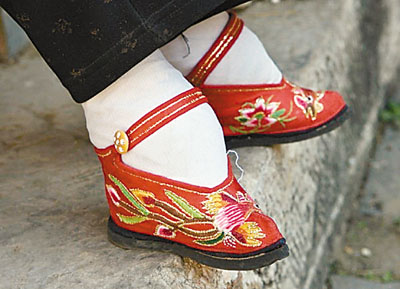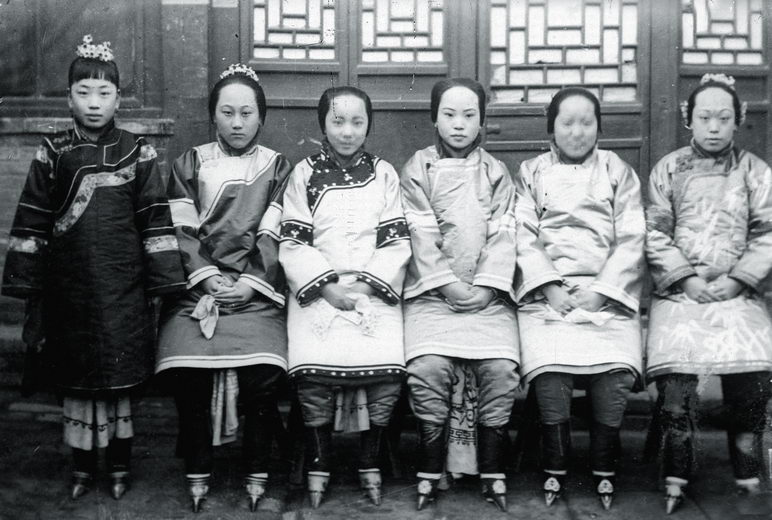"Foot binding was the custom of applying tight binding to the feet of young girls to modify the shape of the foot. The practice possibly originated among upper class court dancers during the Five Dynasties and Ten Kingdoms period in 10th century China, then became popular among the elite during the Song dynasty and eventually spread to all social classes by the Qing dynasty.
Foot binding became popular as a means of displaying status (women from wealthy families, who did not need their feet to work, could afford to have them bound) and was correspondingly adopted as a symbol of beauty in Chinese culture.
Foot binding limited the mobility of women, resulting in them walking in a swaying unsteady gait, although some women with bound feet working outdoor had also been reported. The prevalence and practice of foot binding varied in different parts of the country. Feet altered by binding were called lotus feet.
It has been estimated that by the 19th century, 40–50% of all Chinese women may have had bound feet, and up to almost 100% among upper class Han Chinese women. The Manchu Kangxi Emperor tried to ban foot binding in 1664 but failed.
In the later part of the 19th century, Chinese reformers challenged the practice but it was not until the early 20th century that foot binding began to die out as a result of anti-foot-binding campaigns. Foot-binding resulted in lifelong disabilities for most of its subjects, and a few elderly Chinese women still survive today with disabilities related to their bound feet.
In 1912, the new Republic of China government banned foot binding (though not actively implemented). By the 21st century, only a few elderly women in China still have bound feet. In 1999, the last shoe factory making lotus shoes, the Zhiqiang Shoe Factory in Harbin, closed."
Source - wikipedia






Films that deal with this topics:
Snow Flower and the Secret Fan











 Ceki:
Ceki:
 Kimberly:
Kimberly:
